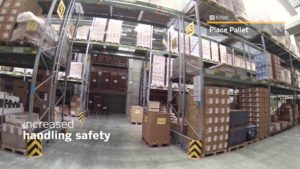Getting Started with Industrial Augmented Reality
Necessity is the mother of invention, so the old saying goes. Nowhere is that more true than where the enterprise is concerned. Intense competition, shrinking margins and the rising costs of doing business make for a demanding operating environment where even small mistakes can end up being costly in the bigger picture. The commercial aerospace market knows this all too well—cancellations and delays cost the industry $45 million per day. Similarly, a typical oil refinery in the energy sector could lose $800K per day due to improperly maintained processing equipment.
It used to be that slow and steady improvements in operational performance would win you the race—not so anymore. Now, just meeting expectations depends on improving bottom line performance 10x, 100x or even more. While there used to be room to improve in optimizing cost efficiency through process improvements alone, order-of-magnitude improvements demand investment in new disruptive technologies that will fundamentally transform how businesses operate.
Enter Augmented Reality
Here at NGRAIN, we see Augmented Reality (AR) as technology that ultimately maximizes the performance of people, machines, and the interactions between them. With companies across the Global 2000 in aerospace, defense, energy, manufacturing and healthcare using NGRAIN in the field today, we have seen firsthand the benefit that virtual and augmented capabilities can bring to the enterprise. Industrial applications that we have deployed are ensuring that specialists on the front line are getting more done than they ever could before. Our work with companies including Lockheed Martin, Raytheon and Microsoft are uncovering the incredible potential of AR, from providing on-the-job support on the manufacturing floor, to enabling the success of critical operations in the field, to keeping complex vehicles running and heavy equipment online.
It can be daunting to bring AR into your business—where do you start? Who do you talk to? Here’s what you can do today:
- Get in touch with the AREA. NGRAIN is a charter member of the AREA because we are committed to reducing the barriers to AR adoption across the enterprise, and the AREA provides a natural and mutually supportive network that can help you and your organization get on the path to learning more about AR and the value it can bring to your business.
- Download some software and give AR a try. It’s easy to get started with industrial AR. There is a growing number of off-the-shelf software applications you can use to quickly experience AR on a mobile device, tablet, or even wearable smart glasses such as the Epson Moverio. NGRAIN offers a commercial product called Vergence, which provides a straightforward, but feature-rich introduction to creating your own AR experiences without having to write any code or invest in the development of custom software.
- Attend an AR conference. One of the best ways to evaluate the application of industrial AR within your organization is to learn from the experiences of others who are activley involved in the deployment of these technologies; most are eager to share their knowledge about this emerging space. Consequently, the growing interest in enterprise AR has resulted in a host of conferences, trade shows, and events that focus on the use of AR in industrial markets. Though not focusing exclusively on enterprise AR, the annual Augmented World Expo (AWE), now in its sixth year, draws thousands of attendees who share an interest in bringing AR to market and is a great way to get connected with the broader AR community. For those interested in an event focused entirely on enterprise and industrial AR, join the AREA members at the ARise ’15 event at the Advanced Manufacturing Research Center in Sheffield, UK on July 1, 2015. A quick online search will also yield a significant number of results for events segmented by industry and interest.
Now is a great time to be exploring the potential of AR for your business. The technology is accessible and a thriving community and active developer ecosystem we quickly emerging. Most importantly, the barrier to entry is declining and is as easy as reaching out and having a conversation. We look forward to being in touch!
